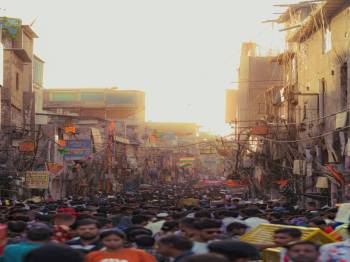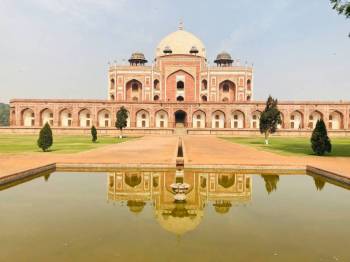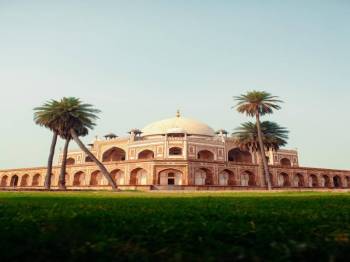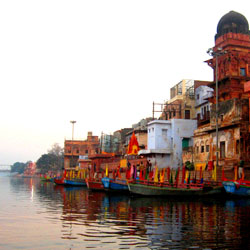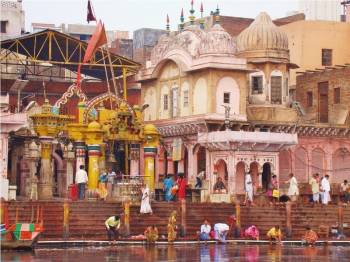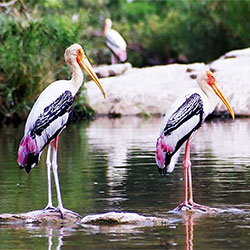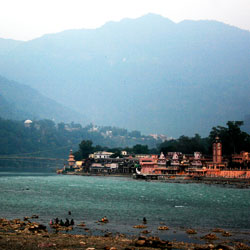View Mobile Number
travelmoodsindia@gmail.com
Same Day Delhi Tour
Duration : 1 Day
Destination Covered : New Delhi, Qutab Minar, Gandhi Memorial Museum, India Gate, Lotus Temple, Akshardham Temple
Tour Activities : Forts and Palaces, Sightseeing
Tour Themes : Culture & Heritage, Monuments & Historical Places, Day & Weekend Tours, Affordable & Budget Tours, Architecture & Gardens
2000
Per Person
New Delhi, Qutab Minar and Gandhi Memorial Museum Tour Overview
We are a one stop destination for all those who want to explore the capital of India, Delhi in a day. We understand that many tourists have no time to visit the city at length, thus we have come up with Same Day Delhi Tour Package. Delhi is the lifeline of the nation and the emblem of India's past as well as present. With a history that dates back to more thousand of years, a trip to Delhi is something that you will cherish for your entire life. In our One Day Delhi Sightseeing Tour, you will explore all the famous tourist attractions of Old & New Delhi.
New Delhi, Qutab Minar and Gandhi Memorial Museum Tour Itinerary
Driver will pick you up at your desired location in Delhi/Ncr in the morning.
08:00 HRS: JAMA MASJID
The best time to visit Jama Masjid in Old Delhi is in the early morning by 8 AM. The construction of Jama Masjid was started in 1650 by the great Mughal Emperor Shah Jahan. It took more than 6 years to 5000 workers to complete the construction of the largest mosque in India. Old Delhi vibes will make you feel wholesome and full of love. The smell of street food and narrow lanes will bring you in love with Old Delhi. Try the street food here, you will love it.
09:30 HRS: RED FORT
Made of red stone, it is one of the most magnificent palaces in the world. This wonderful palace is the symbol of India's sovereignty. It was built by Emperor Shah Jahan in 17th century. Until 1857, it was the Mughal capital of India. In 2007, UNESCO declared it as World Heritage.
11:00 HRS: RAJ GHAT
It was here that the remains of Bapu of the nation, Mahatma Gandhi were cremated in the year 1948. Pay your respects to the Father of the Nation, Mahatma Gandhi. The site of Gandhi`s cremation is marked by this placid memorial. Pause for a moment and enjoy the serene ambiance of this peaceful location.
13:00 HRS: QUTUB MINAR
If you want to see an example of Afghan architecture in India then Qutab Minar is the place to visit. Qutubuddin Aibak started its construction in later part of the 12th century and Iltutmish, his successor got it completed. Explore the old minaret`s beautiful carvings and feel them.
14:00 HRS: LUNCH
Take a little break and savour a delectable meal at an authentic multi-cuisine Indian restaurant.in Delhi.
15:00 HRS: HUMAYUN'S TOMB
It is another remarkable example of Mughal architecture. Enjoy the verdant grounds and be in awe of the elaborate design of this tomb, which acted as a model for the Taj Mahal.
16:30 HRS: LOTUS TEMPLE
Designed in the shape of Lotus, the marvel of contemporary architecture, Lotus Temple was built 1986. It is a symbol of Bahai faith that believes in universality and purity of the Lord. Take some time to meditate or simply enjoy this unique building's splendour.
18:00 HRS: AKSHARDHAM TEMPLE
In the Evening discover the beautiful Akshardham Temple, see the exquisite displays, sculptures, and carvings that portray a range of aspects of Indian spirituality and culture. Akshardham Temple looks beautiful in the evening with lights. There is a light and sound show as well here, you can attend that too. The show duration is 45 minutes and it is conducted after sunset, with the first show typically starting at 7:30 PM.
21:00 HRS: INDIA GATE
It was designed by Sir Edwin Lutyens to commemorate 70,000 Indian soldiers who lost their life in World War 1. Its construction was completed in 1931. The arch is home to the Eternal Flame. Pay your respects at this famous memorial, meander idly around India Gate's lovely gardens. At 9 PM, you can enjoy the light show without restrictions.
22:00 HRS: DROP OFF
Once you are all done with the monuments visiting, the driver will pick you up at from the India Gate and drop you at your desired location in Delhi.
More Details about New Delhi, Qutab Minar and Gandhi Memorial Museum Tour
Inclusions
- Private Ac Cab
- Live Tour Guide
- Tolls and parking
- All applicable taxes
Exclusions
- Accommodation
- Monument entry fees
- Tips
- Meals
- Personal expenses
Payments Terms
- * Some Advance Percentage of total booking amount
- * Airfare/Transport fare to be paid full at one time in advance.
Price & Rates
| No of pax | Age Limit | Price per pax (Rs) |
|---|---|---|
| No of pax Adult | Age Limit Above 12 years/Per person | Price per pax (Rs) INR 2000 / Adult ( With Tax ) |
Cancellation & Refund Policy
- * Upon cancellation, refund will be made after deducting the Retention Amount.
- * Retention Amount varies as per the number of days left before your package start date.
Packages by Theme
Similar Tour Packages for New Delhi
Explore Tour Packages by Destination




